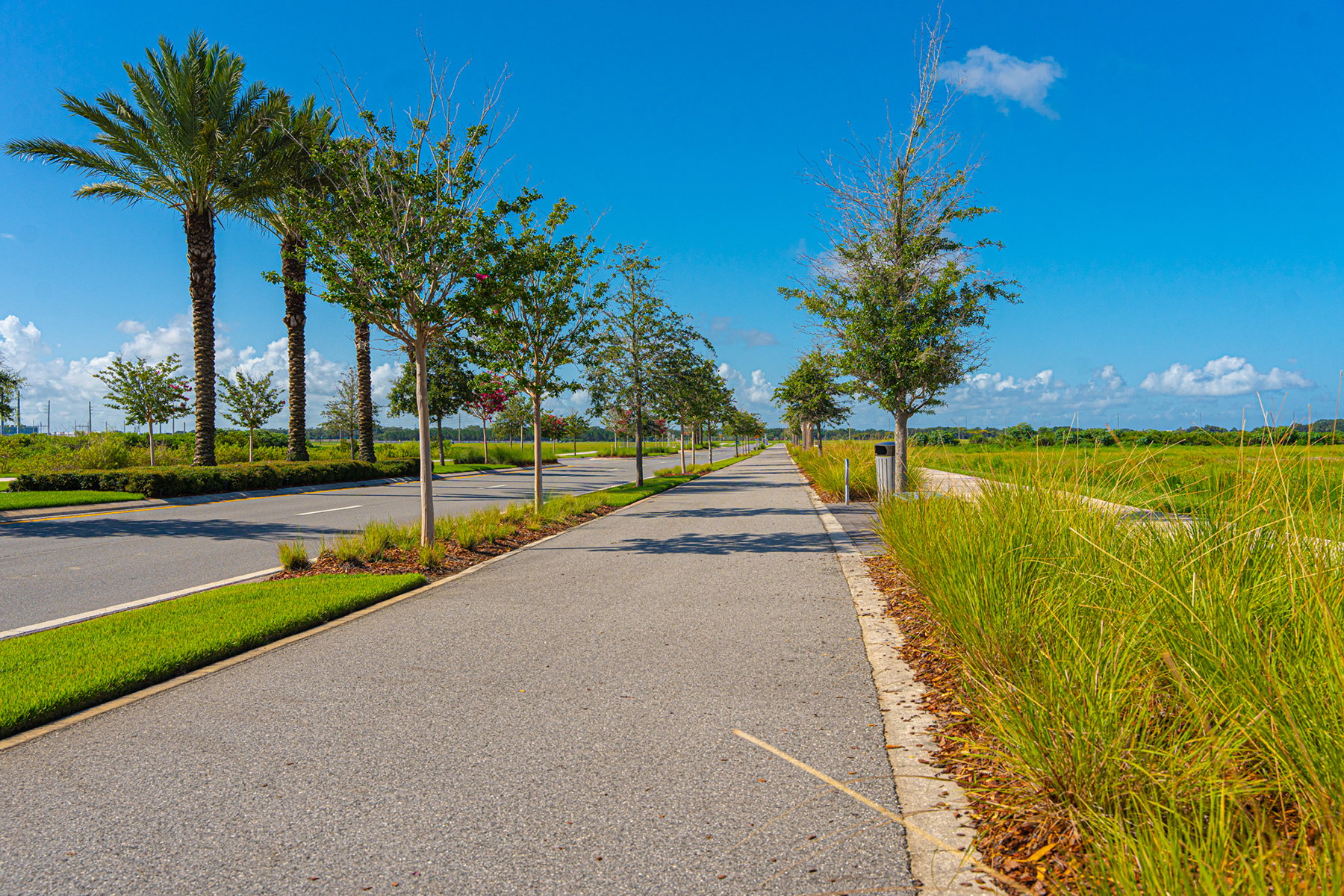Full disclosure, we aren’t really going to list 99 different problems in this article, but we are going to cover a lot (and we couldn’t resist the chance to throw in a mid-2000s hip-hop reference).
Chances are that if you’re in property management, you’ll find a few things you’re dealing with right now, or have at least dealt with in the past. And when they came up, your landscaper probably wasn’t your first call to help you solve them.
But lately we’ve been thinking about all the problems (and resulting complaints) property owners and managers have to deal with. Many of these problems could be solved by a landscaping professional, but we’re not always the obvious solution.
Why? Because one of the first things people think of with landscaping is beauty - aesthetic appeal. So, what landscapers add through attractive curb appeal overshadows the litany of problems they can help you with through functional enhancements.
And we don’t do enough to change this idea. Landscape professionals are prone to highlighting all the beautification possibilities with commercial landscaping, and beautifying properties is absolutely a huge goal.
But it’s high time functional landscaping solutions stepped into the spotlight. These issueswe’re going to talk about can help you solve many common property problems you’ve been burdened with for too long.
And we think you’ll probably notice many of these remedies are more cost-effective than what seemed to be the obvious (non-landscaping) solution.
#1 Defensive Landscaping
This is a real problem solver that can help keep money in your budget by avoiding the costly installation of fencing, for example. The idea is that landscaping elements can be used to keep people away from certain areas of your property.
Instead of a chain link enclosure to protect HVAC units from thieves, thorny rose bushes could be an affordable option. Besides the sharp deterrents, the roses can hide the units altogether, while providing shade (which may reduce power usage and costs).
And here are some additional functional ideas for defensive landscaping:
- Strategic shrubs and dense hedges guide traffic to designated entrances while deterring unauthorized access.
- Lower plantings near entrances with taller vegetation at boundaries create clear sightlines for security while maintaining privacy.
- Barrier plants, like holly, positioned beneath windows create physical deterrents without appearing hostile to legitimate visitors.

#2 Drainage Problems
Many of the most important landscaping projects are never seen by the public. Drainage enhancements fall into this category. Because with poor drainage, the ugly results will always get noticed. (i.e., muddy spots on sidewalks, parking areas, or near outdoor seating). The solution to this issue is often installed out of sight and not obvious, though.
Poor drainage can also make sections of your lawn a waterlogged mess. Additionally, those lingering puddles attract disease-spreading mosquitoes. And no one wants that, even if your property is miles off a main road, rarely seen by anyone except your employees.
#3 Utilize Safety Lighting Already on Your Property
Proper lighting makes a big impact on safety, especially in parking lots. The thing is, property owners often have plenty of lighting installed, yet too much of the light is getting blocked by overgrown tree limbs or shrubbery.
Many times, a simple fix is raising the tree canopy. This allows more light to shine through to where it’s intended. The same is true for trimming shrubbery that’s interfering with ground-level lighting.
But safety is just one aspect. Don’t forget that your signage might not be visible at night if shrubs or trees are not on a regular pruning schedule.

#4 Functional Hardscape Tweaks
Again, it’s hard for us not to focus on the endless curb appeal that comes with hardscape upgrades. We will stand firm though, and stick with functionality. You don’t have to install an outdoor kitchen area complete with a fireplace to get the benefits of hardscape enhancements.
Quick examples below:
- Add ground-level path lighting (improves safety and can increase the use of walking trails).
- Install shade structures or trees in seating areas to increase outdoor opportunities for guests, residents, or employees needing cool-down spots.
- Divide outdoor areas naturally (with green walls or a trellis) to highlight a variety of possible activities and leisure.
- Use permeable patio materials to avoid standing water and adhere to sustainability goals.
#5 Privacy
Sometimes, a solid fence is the best solution to add privacy to part of your commercial property. Yellowstone Landscape can assist you with that (usually through our prequalified network of subcontractors), of course. However, there are landscaping elements that might work even better, depending on your needs.
Some privacy solutions you may not have considered:
- Layered plantings: Combine trees, shrubs, and perennials at various heights to create natural screens with a bonus—visual interest and depth.
- Strategic evergreens: Place year-round screening plants like hollies at key viewpoints.
- Raised planting beds: Elevate greenery to increase height without waiting for plants to mature fully.

#6 Retaining Walls (Various Tiers)
As you’ve likely seen before, retaining walls can be eye-pleasing features. Yet, the main purpose of a retaining wall is functional - to control excess water after heavy rains. Sadly, the aesthetic appeal of a retaining wall is often underutilized on properties that have no need to look flashy or glamorous.
But there are different “tiers” of retaining walls. A basic wall without elegant stones will reduce the property owner’s cost of installation. And it’ll be 100% as functional as a more creatively designed retaining wall. This is good news for business owners concerned about water damaging their building foundations.
#7 Irrigation Audits
We mentioned how some landscaping solutions on this list will be more affordable than alternative non-landscaping remedies. Well, this one is nearly guaranteed to save you money if your property has an outdated irrigation system. An irrigation audit is likely to catch leaks and inefficiencies that are wasting part or a large chunk of your landscaping budget (six-figure savings in this case study!).
A water audit is one of the wisest steps you can take, in our opinion. It can help you achieve sustainability goals in addition to cutting utility costs.
#8 Leaf Clean-Ups
This is one of those landscaping services that isn’t always done on a regular basis. Some Yellowstone Landscape customers choose a four-visit leaf clean-up. Others only want it done once—after all the leaves have dropped.
Leaf clean-ups make a commercial property look neat and tidy. The good news is you can add this service at the time you need it. Just because it didn’t fit in your budget when you signed your landscape maintenance contract, you may have room in the budget now.
Now, property managers know snow and ice are slip-and-fall liabilities. Yet, wet leaves are slippery too, and cause thousands of injuries due to falls each year (critical to consider for senior living facilities and 55+ HOA communities).

#9 ADA Compliance
Although any kind of compliance is important, busy property owners often feel the burden of so many regulations combined. Offloading at least one area of compliance might relieve some of that burden. An experienced landscape company will be on top of ADA (Americans with Disability Act) compliance, helping you avoid fines and lawsuits. Your provider should be able to guide you on any outdoor compliance issues.
Four common ADA violations Yellowstone crews notice and alert managers about include:
- Walkways that are too narrow
- Excessive slopes or cross-slopes
- Lack of curb cuts or ramps at level changes
- Unpaved or unstable walking surfaces that impede wheelchair mobility
#10 Territorial Reinforcement
Although not a term everyone’s familiar with, territorial reinforcement is simply an effort to establish clear psychological boundaries between public and private spaces. What’s the difference? Think about how many public buildings get vandalized with graffiti compared to private buildings. There’s a reason.
Private spaces signal ownership and monitoring. Specific people have a vested interest in protecting and keeping private property looking nice. Public spaces are more open, by their very nature, thus vulnerable and inviting to bad actors.
Clearly marking the start of one property and the end of another can be as easy as strategic plantings or distinctive hardscape designs.
#11 Natural Safety Barriers
We’re not breaking our promise with this one. It truly is all about functionality. However, there’s no question that 100 people out of 100 would choose boulders or large plant containers as safety bollards over unsightly concrete barriers.
For instance, if you were looking to add small shade trees to your commercial property, why not double the function by installing them in extra-large planters that prevent unauthorized vehicle entry? Another example of this functional safety concept is having trees installed in roadway medians to keep vehicles from crossing into oncoming traffic (a service a few of our municipal customers have requested over the years).

Conclusion
We’ve reached the end of the list without discussing the virtues of landscaping aesthetics—for the most part.
And while there’s no question about the beauty that professional landscapers add to the world, the functional opportunities don’t get nearly enough recognition.
Maybe this article will start to change that. Even if it only serves to spark your imagination for alternative solutions that can solve problems on your property, we’ll consider that a win.
Remember that you don’t have to have certain landscaping services or enhancements in your contract to utilize them. One-time projects, small or large, can be added to regular services at any time.
Just get in touch with your Yellowstone Landscape account manager.
*Bonus List of Functional Landscape Enhancement Possibilities*
- Permeable paving systems - Alternative to traditional hardscaping that allows water infiltration while providing stable surfaces for pedestrian or light vehicle traffic.
- Bioswales - Vegetated channels that filter pollutants from stormwater runoff while directing water away from structures.
- Snow melt systems - Heating elements installed beneath walkways to eliminate manual snow removal and reduce slip hazards.
- Living noise barriers - Densely planted vegetation walls that absorb sound waves more effectively than hard surfaces.
- Natural mosquito control plantings - Strategic use of mosquito-repelling plants like citronella, lavender, and catnip around outdoor gathering areas.
- Lightning protection systems - Incorporating tall trees with proper grounding systems to serve as natural lightning rods.
- Enhanced irrigation monitoring - Smart systems that adjust watering based on soil moisture content rather than timers.
- Carbon sequestration zones - Specialized plant selections and soil amendments designed to maximize carbon capture.
- Windbreak configurations - Strategic tree and shrub placement to reduce heating costs and wind damage.
- Wildlife corridor - Connected vegetated areas that support beneficial wildlife movement through urban environments.
- Pollinator support systems - Year-round flowering succession planning to support commercial agriculture and food production.
- Snow fence planting configurations - Strategic vegetation placement to control snow drift patterns in parking areas.
- Air filtration zones - Dense plantings of species known to capture particulates and improve air quality near building air intakes.
- Therapeutic sensory gardens - Specialized plant selections that support rehabilitation services through the engagement of multiple senses.
Sign up for the Yellowstone Landscape Newsletter to get more property solution ideas right in your inbox.


